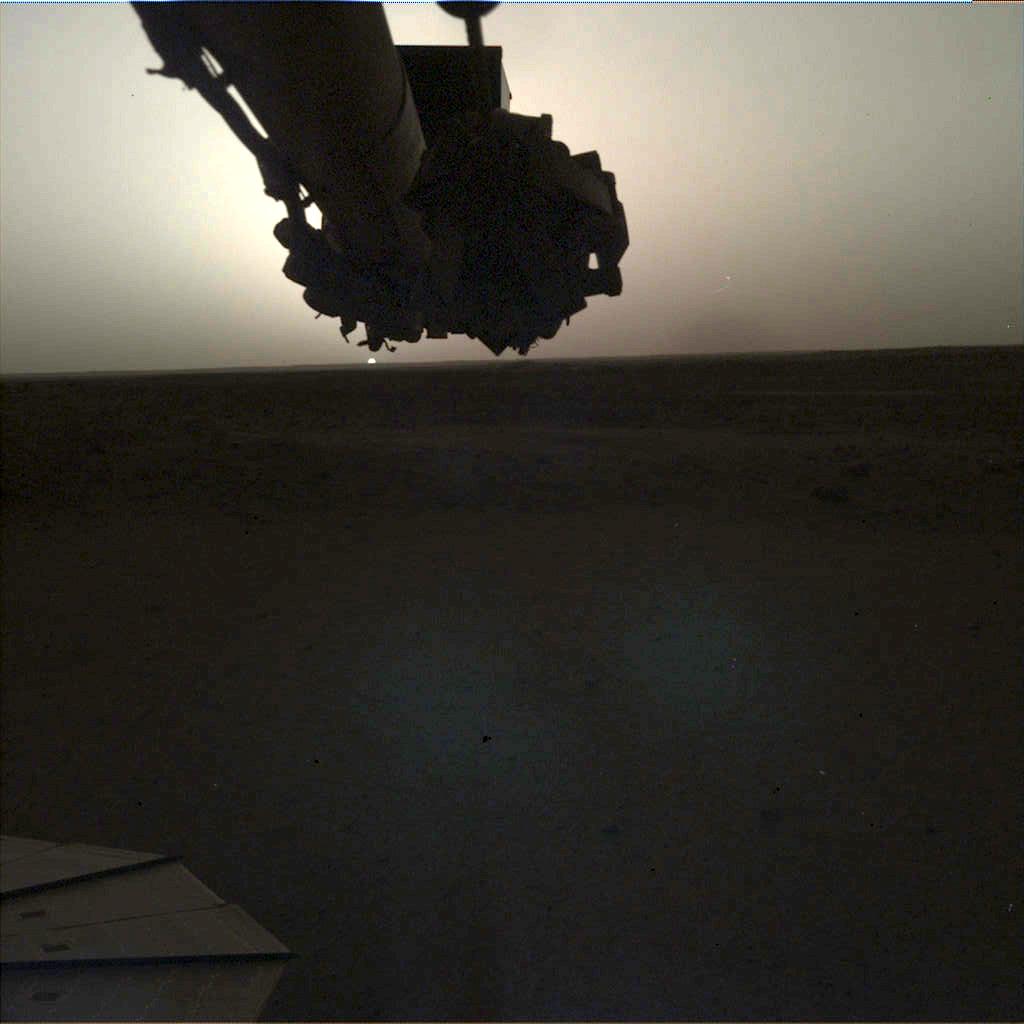
A pair of images taken by the Instrument Deployment Camera (IDC) aboard NASA’s InSight lander has captured views of the sunrise and sunset on Mars.
These images are part of a Martian tradition, in which different Mars landers take images of the cycles of day and night on the planet. The Viking 1 lander took an image of the sun setting over Mars’ rocky terrain in 1976, while a hazy sunrise was captured by Viking 2 in 1978. In 2005 the Spirit Rover imaged the sun setting over the horizon, and the now tragically defunct Opportunity took a video of the sun setting in 2010. Most recently, Curiosity also captured a beautiful blue-tinted sundown as seen from the Gale Crater in 2015.
“It’s been a tradition for Mars missions to capture sunrises and sunsets,” Justin Maki, InSight science team co-investigator and imaging lead at NASA’s Jet Propulsion Laboratory in Pasadena, California, said in a statement. “With many of our primary imaging tasks complete, we decided to capture the sunrise and sunset as seen from another world.”

Because Mars is further out from the Sun than Earth is, the Sun appears much smaller in the sky from there than from here. It appears about two-thirds of the size as when we observe it from Earth.
As well as the sunrise and sunset images, InSight captured images of drifting clouds in the sky over its seismometer, safe inside its heat shield. This image was captured fortuitously by the Instrument Context Camera (ICC), which is mostly designed to examine the area around the lander called its workspace. The ICC just happened to catch the clouds as they passed by.




